Monolith mania is showing no signs of abating as the strange sculptures continue to appear around the world.
There have been as many as 200 reports of them to date, including recent examples in Turkey and the Democratic Republic of Congo. Like many of their predecessors, they disappeared just as suddenly as they materialized.
Last week, a monolith in the Democratic Republic of the Congo was burned down just a few days after it was found on the streets of Kinshasa, the capital city, reports Reuters. Local officials denied that the statue was erected as a publicity stunt, and told the BBC that scientists would run tests on the remnants of the demolished structure.
Earlier this month, a 10-foot-tall monolith appeared overlooking a wheat field near the Turkish World Heritage Site Gobekli Tepe, setting of Turkish Netflix series The Gift. (At 11,000 years old, it’s believed to be the world’s oldest temple.) The monolith was placed under armed military guard, but disappeared February 9, just four days after its discovery, according to the Associated Press.
Days later, the sculpture was revealed to be a promotional campaign when an image of the monolith was included in President Recep Tayyip Erdogan’s televised announcement of the nation’s new space program. The monolith bore an inscription in Goturk, an ancient Turkish alphabet, that read: “Look at the sky if you want to see the moon.” It is now the space program’s slogan.

Soldiers stand guard near a monolith at the ancient site of Gobeklitepe, known as the world’s oldest temple, in Sanliurfa, Turkey. Photo by Yasin Dikme/Anadolu Agency via Getty Images.
The first monolith appeared in the Utah desert in November, spotted by government officials counting bighorn sheep by helicopter. It quickly began drawing visitors, some of whom drove hours to see and take pictures with the oddity for themselves.
Days later, professional slackliner Andy L. Lewis destroyed and removed the piece under cover of night, citing concerns about the environmental impact the surge of tourists was having on the site.
Reminiscent of the alien structure in Stanley Kubrick’s 1968 film 2001: A Space Odyssey, the mysterious sculpture invited conspiracy theories—especially when similar monolith suddenly began popping up in various locations around the world, igniting a global craze.
The same day the Utah monolith met its end, one appeared in Romania with circular markings on its surface. It later vanished without a trace, its origins still unknown.
By that point, the trend for monoliths was in full swing.
There was one atop Pine Mountain in Atascadero, California, put there by a group of guerrilla artists, although it was quickly destroyed by Christian fundamentalists. A candy shop owner put one outside his store in Pittsburgh, and British designer Tom Dunford planted one on the beach on the Isle of Wight.
Elsewhere in the UK, a hilltop monolith in Glastonbury with a stenciled rat on its base was helpfully labeled “Not Banksy,” while, across the Atlantic, a gingerbread version was found in a San Francisco park on Christmas day and hailed as a Yuletide miracle.
Outside Milwaukee, someone erected one of snow and ice late last month. Another recent iteration was spotted in St. Gertraudi, Austria, where it appeared in a field of snow. In Park City, Utah, a local handyman is suspected of putting an LED version in a neighbor’s yard under cover of night.
Most copycats have materialized in outdoor locations, but one did pop up in a South African grocery store. All in all, there have been sightings as far afield as Italy, Colombia, New Zealand, India, Bolivia, Japan, and Norway, among other countries.
Initially, some in the art world suspected that the first monolith was the work of sculptor John McCracken, known for creating similar metal artworks. The artist’s dealer, David Zwirner, as well as McCracken’s son expressed suspicion that he had erected the work before he died in 2011.
The Most Famous Artist, a prankish New Mexico art collective with a history of claiming responsibility for the stunts of others, has taken credit for the first monolith. As the frenzy over the mysterious sculptures rose to a crescendo in December, the group released an edition of three monoliths—plus an artist’s proof—for $45,000 each.
The phenomena has been thoroughly documented by the Monolith Tracker, which has put together a timeline of monolith appearances—and disappearances—worldwide, as well details about each specimen, and any known information about their origins. It lists over 200 possible monolith sightings, including images shared on Google Earth of one supposedly in Antarctica, near Argentina’s San Martín base.
See more photos of monoliths around the world below.

A metal monolith that has popped up on a riverbank of the Vistula in the Polish capital Warsaw, the latest in a string of similar objects that have recently appeared in Europe and the US, seen here on December 10, 2020. Photo by Wojtek Radwanski/AFP via Getty Images.
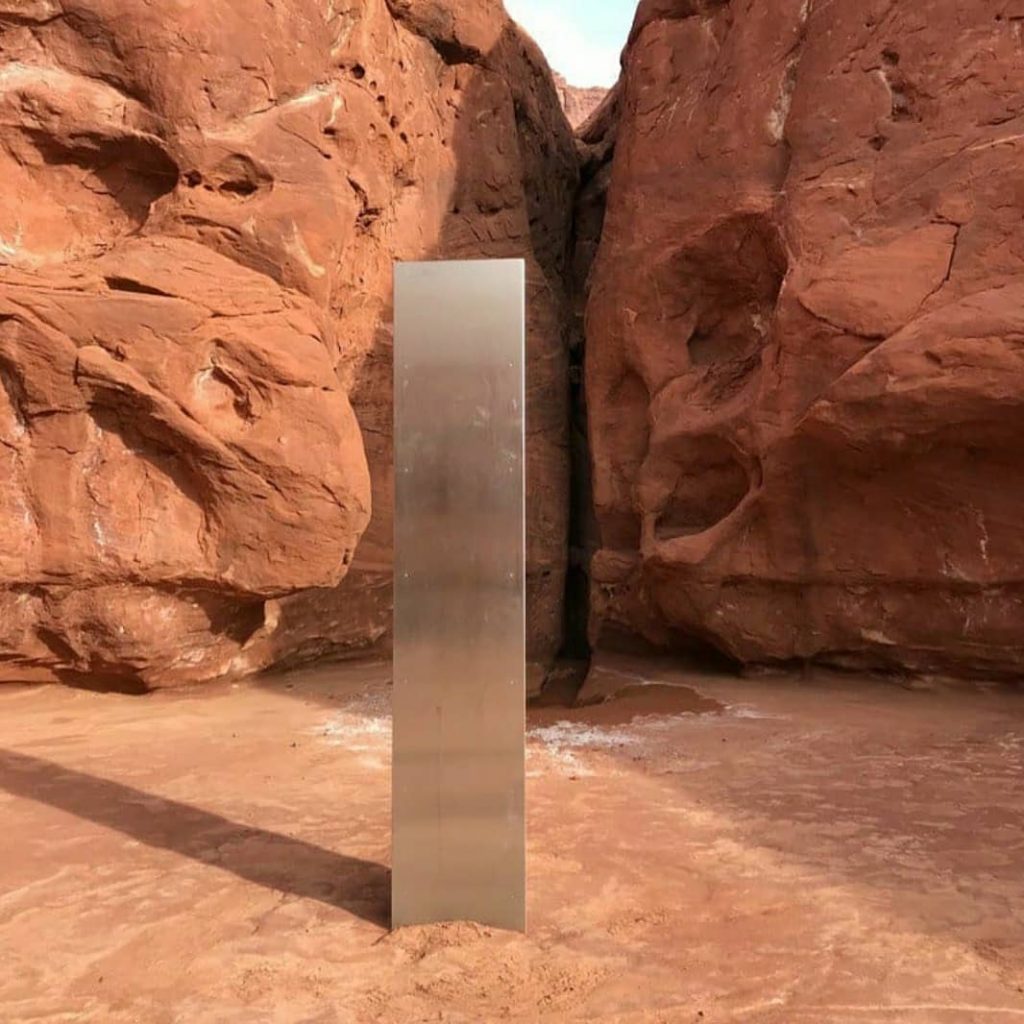
The steel monolith discovered in southern Utah. Courtesy of the Utah Department of Public Safety.
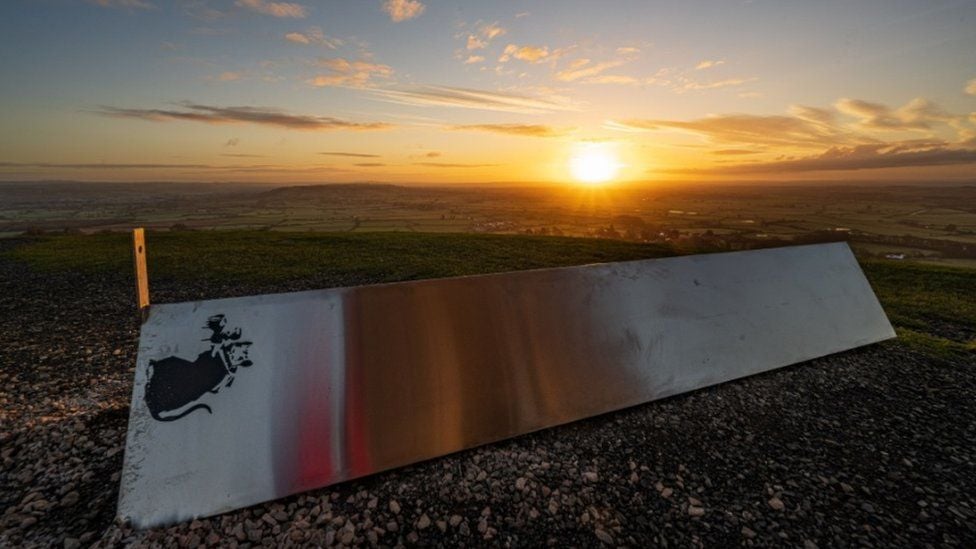
This “Not Banksy” monolith appeared at Glastonbury Tor in the UK in December, and was quickly removed by the National Trust. Photo by Michelle Cowbourne.
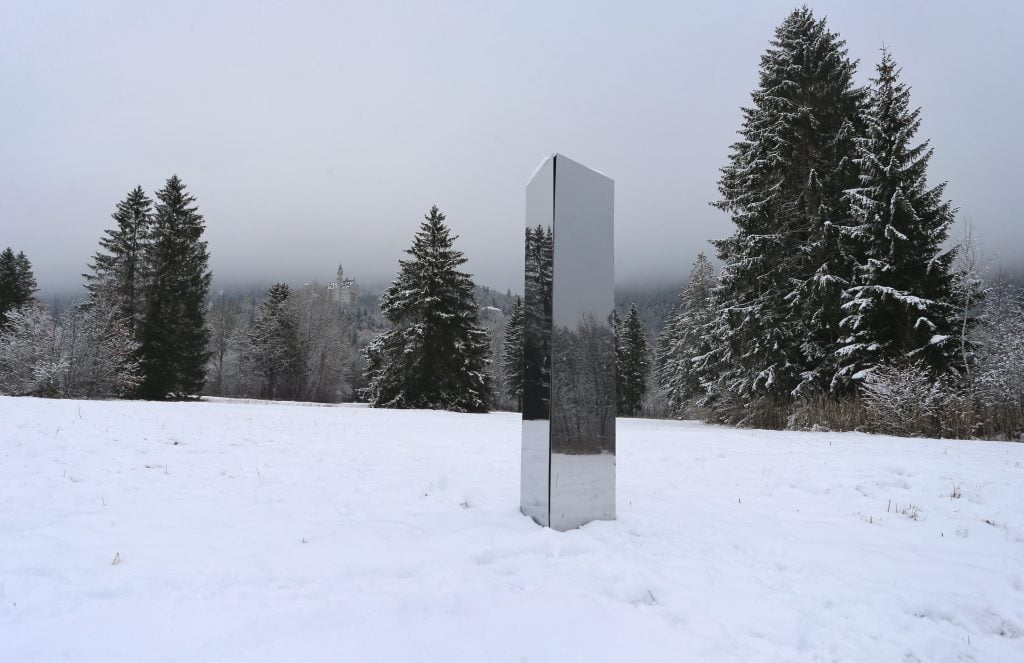
A monolith made of metal stands below the castle Neuschwanstein in Bavaria, Schwangau, on a meadow in the snow. Photo by Karl-Josef Hildenbrand/dpa/picture alliance via Getty Images.
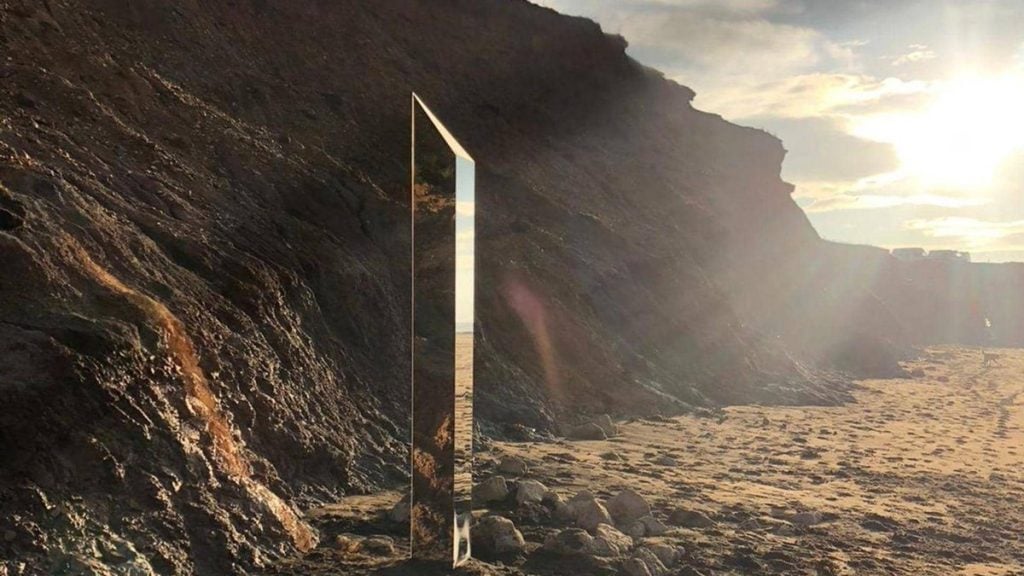
Tom Dunford erected this monolith on Compton Beach on the Isle of Wight. Photo by Ton Dunford.

A monolith on the very east point of Humber Bay Park East in Toronto on New Year’s Day. Photo by Rick Madonik/Toronto Star via Getty Images.

Customers do their groceries next to a metal monolith inside the Kwikspar supermarket in Hillcrest, near Durban, South Africa, on December 19, 2020. According to the supermarket’s management the mysterious incident happened during South African President’s address to the nation on December 14, 2020. He says the store’s electrical power failed and it was under the cover of darkness that the monolith made a mysterious appearance. Photo by Rajseh Jantilal/AFP via Getty Images.
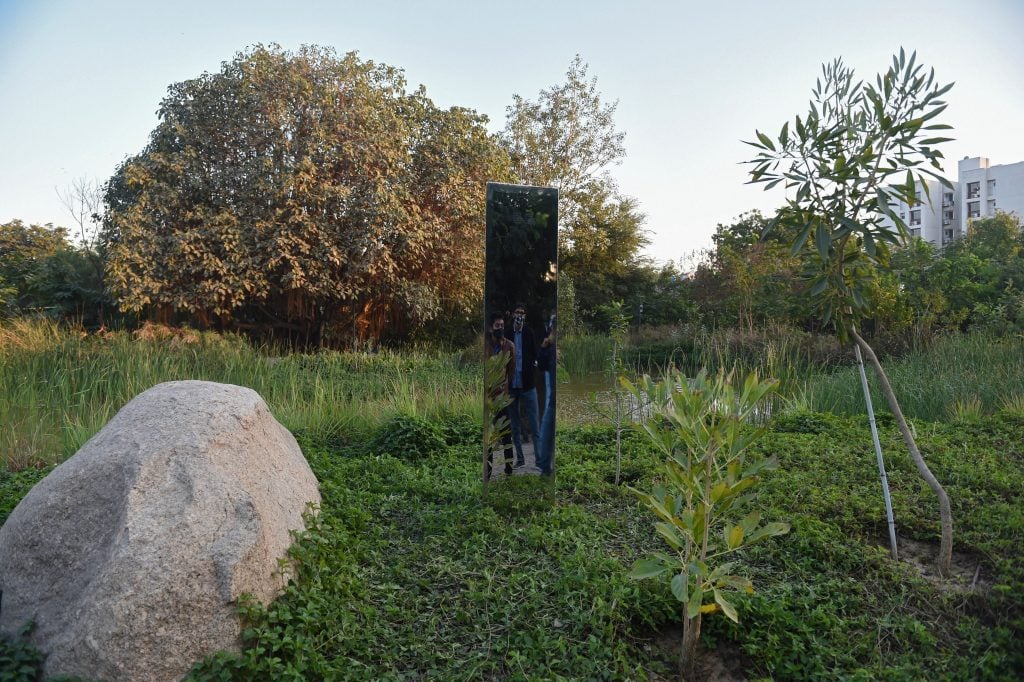
An art installation of a monolith made of steel is seen at Symphony Forest park in Ahmedabad, India, on December 30, 2020.
Photo by Sam PanthakyAFP via Getty Images.

A mysterious metal monolith, similar to others appearing in Europe and USA, which was discovered in the nature reserve area Tiendeberg, in Riemst, Belgium on December 10, 2020. Photo by Bruno Fahy/Belga/AFP via Getty Images.

A passerby walks by a monolith outside of Grandpa Joes Candy Shop in the Strip District area of Pittsburgh, Pennsylvania on December 6, 2020. Photo by Maranie R. Staab/AFP via Getty Images.
Follow Artnet News on Facebook:
Want to stay ahead of the art world? Subscribe to our newsletter to get the breaking news, eye-opening interviews, and incisive critical takes that drive the conversation forward.
from WordPress https://ift.tt/37BjIvt
via IFTTT



No comments:
Post a Comment